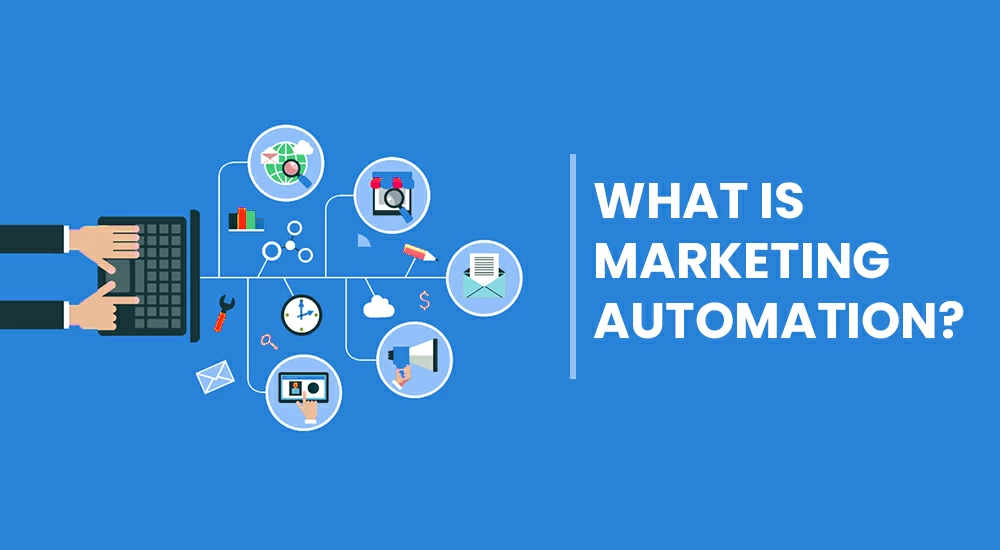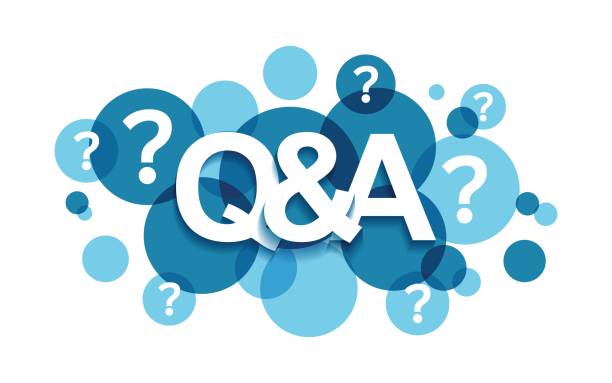7 Marketing Automation Best Practices You Need
Marketing automation is not just a buzzword. It is a powerful strategy that can help you grow your business, save time, and increase conversions. How can you begin with marketing automation and what are the best strategies to use? This article will tell you everything you need to know.. We will explain what marketing automation is, why it is vital for your business, and what are the 7 best practices to implement. We will also share 5 common mistakes to avoid in marketing automation setup. Finally, we will provide a Q&A section where you can find answers to some frequently asked questions about marketing automation. Let’s get started!
What is Marketing Automation?

Marketing automation is the use of technology to automate, streamline, and optimize various marketing processes. It allows businesses to save time and effort by automating routine tasks such as email campaigns, social media posts, and customer segmentation. According to Harvard Business Review (HBR), marketing automation can reduce sales cycle times by up to 50% and increase productivity by up to 20%.
Marketing automation is not a one-size-fits-all solution. It can be customized to suit your business goals, target audience, and industry. For example, marketing automation can help you to::
- Generate and nurture leads
- Increase customer loyalty and retention
- Boost sales and revenue
- Enhance customer service and satisfaction
- Improve brand awareness and reputation
- Optimize marketing performance and ROI
Why is Marketing Automation Vital for Your Business?
Marketing automation plays a crucial role in providing a personalized and seamless customer experience, leading to increased customer engagement and conversions. It acts as a personal assistant for your marketing campaigns, working tirelessly in the background to streamline and automate repetitive tasks, nurture leads, and personalize customer experiences.
Here are some of the benefits of marketing automation for your business:
- It saves you time and resources by eliminating manual and tedious tasks.
- It helps you segment and target your audience based on their behavior, preferences, and needs.
- It delivers relevant and timely messages to your prospects and customers across multiple channels and devices.
- It tracks and measures your marketing performance and provides actionable insights to improve your strategies.
- It enhances collaboration and communication among your marketing, sales, and customer service teams.
7 Marketing Automation Best Practices
Now that you know what marketing automation is and why it is vital for your business, let’s look at some of the best practices to follow to make the most of it. Here are 7 marketing automation best practices you need to implement:
1. Prioritize Adaptive Lead Engagement
One of the main goals of marketing automation is to generate and nurture leads until they are ready to buy. However, not all leads are the same. They vary in their needs, interests, and pain points.. They also move at different speeds along the buyer’s journey. Therefore, you need to create dynamic programs that cater to each individual’s unique journey. This means developing a framework that adapts to your leads’ needs with personalized touchpoints, allowing each lead to choose their own journey.
For example, marketing automation can help you to::
- Send automated emails based on triggers, such as downloading a lead magnet, visiting a landing page, or filling out a form.
- Provide relevant and valuable content, such as blog posts, ebooks, webinars, or case studies, to educate and inform your leads.
- Use lead scoring to rank your leads based on their level of engagement and interest, and assign them to different segments and workflows.
- Use lead nurturing campaigns to guide your leads through the sales funnel, addressing their pain points, objections, and questions, and offering solutions and incentives.
- Use lead alerts to notify your sales team when a lead is ready to be contacted, and provide them with the lead’s profile and history.
2. Make Marketing Assessment and Lead Grading Easier
Marketing automation provides you with a wealth of data and analytics to help you optimize your marketing campaigns. However, data can also be overwhelming and confusing if you don’t know what to look for and how to use it. Therefore, you need to simplify your marketing analysis and focus on the data that matters. This means identifying your key performance indicators (KPIs) and tracking them regularly to measure your marketing effectiveness and ROI.
The key performance indicators you need to track are:
- Number of leads generated
- Lead conversion rate
- Cost per lead
- Customer lifetime value
- Customer acquisition cost
- Revenue generated
- Return on investment
You should also use marketing automation to simplify your lead scoring process. Lead scoring is a method of ranking your leads based on their level of engagement and interest in your product or service. It enables you to rank your leads and concentrate on the ones with the highest conversion potential. However, lead scoring can be complex and time-consuming if you don’t have a clear and consistent system. Therefore, you should use marketing automation to automate your lead scoring process and assign scores to your leads based on predefined criteria, such as:
- Demographic data, such as location, industry, company size, job title, etc.
- Behavioral data, such as website visits, email opens, clicks, downloads, etc.
- Psychographic data, such as pain points, goals, challenges, motivations, etc.
You should also update your lead scoring system regularly to reflect changes in your market, audience, and product.
3. Create a Detailed Buyer Experience Map
Understanding your buyer’s journey is crucial for a successful marketing automation strategy. The buyer’s journey is the process that your prospects go through before they become your customers. It typically consists of three stages: awareness, consideration, and decision. At each stage, your prospects have different needs, questions, and expectations. Therefore, you need to anticipate their needs, answer their questions, and offer solutions at the right time to guide them toward conversion.
To do this, you need to build a clear buyer journey map that outlines the following:
- Who are your ideal buyers? What are their demographics, psychographics, and behaviors?
- What troubles them, drives them, challenges them, and inspires them?
- How do they become aware of their problem and your solution?
- How do they research and evaluate different options and alternatives?
- How do they make their final decision and purchase?
- How do they use and experience your product or service after purchase?
- How do you retain and delight them and turn them into loyal customers and advocates?
Once you have a clear buyer journey map, you can use marketing automation to create personalized and relevant campaigns that align with each stage of the buyer’s journey and move your prospects closer to conversion.
4. Evaluate Your Performance Results
One of the advantages of marketing automation is that it allows you to track and measure your marketing performance and ROI. However, tracking your metrics is not enough. You also need to analyze them and use them to improve your marketing strategies. Therefore, you need to track your performance metrics regularly and actively adapt to changes and opportunities.
Some of the ways you can use marketing automation to track your performance metrics include:
- Using dashboards and reports to visualize your data and identify trends, patterns, and insights.
- Using A/B testing to compare different versions of your campaigns, such as email subject lines, landing page headlines, call-to-action buttons, etc., and see which one performs better.
- Using feedback and surveys to collect qualitative data from your prospects and customers, such as their satisfaction, preferences, opinions, and suggestions.
- Using attribution models to understand how your marketing channels and campaigns contribute to your conversions and revenue.
5. Connect Your Marketing Automation Platform with CRM
Integrating your marketing automation system with CRM (customer relationship management) is essential for a smooth and seamless marketing ride. CRM is a software that helps you manage your interactions with your prospects and customers, such as their contact information, communication history, purchase history, etc. By integrating your marketing automation system with CRM, you can:
- Have a 360-degree view of your customer data, such as their demographics, behaviors, preferences, and needs.
- Streamline your marketing workflows and processes, such as lead generation, lead nurturing, lead qualification, lead assignment, etc.
- Provide a more personalized and consistent experience for your prospects and customers across multiple channels and touchpoints.
- Enhance collaboration and communication among your marketing, sales, and customer service teams, and ensure that everyone is on the same page.
6. Prioritize Email Marketing and Reputation
Email marketing is one of the most effective and popular marketing automation tools. It allows you to communicate with your prospects and customers in a personalized and timely manner, and deliver relevant and valuable content and offers. However, email marketing also comes with some challenges and risks, such as spam filters, deliverability issues, and reputation damage. Therefore, you need to focus on your email marketing and reputation and follow the best practices to ensure your emails reach your audience and achieve your goals.
Some of the email marketing and reputation best practices include:
- Building a permission-based email list, and avoiding buying or renting email lists from third parties.
- Following the reachability workflow, which consists of four steps: verification, validation, hygiene, and monitoring.
- Creating engaging email content that resonates with your audience, and leveraging data touchpoints for insights. Data touchpoints are pieces of information that you collect from your prospects and customers, such as their name, location, industry, interests, etc.
- Using email design best practices, such as using a clear and catchy subject line, a responsive and attractive layout, a compelling and concise copy, a strong and clear call to action, and an easy and visible unsubscribe option.
- Regularly cleaning your email database to maintain a high-quality and engaged email list, and avoid spam complaints, bounces, and unsubscribes.
- Testing and optimizing your email campaigns to improve your open rates, click-through rates, conversion rates, and ROI.
7. Harness Content as a Force for Personalization
Content is the fuel that drives your marketing automation engine. It helps you attract, educate, and persuade your prospects and customers, and build trust and credibility with them. However, not all content is created equal. You need to create engaging content that cuts through the noise of countless brands and messages, and resonates with your audience.
Some of the ways you can use marketing automation to leverage content as a catalyst for personalization include:
- Creating buyer personas and content maps to understand your audience and their needs, and create content that matches their interests, goals, and challenges.
- Using content marketing tools, such as blogs, ebooks, webinars, podcasts, videos, infographics, etc., to create and distribute valuable and relevant content that educates, informs, entertains, and inspires your audience.
- Using content personalization tools, such as dynamic content, smart forms, landing pages, etc., to customize your content based on your audience’s data, such as their name, location, industry, behavior, etc.
- Using content curation tools, such as newsletters, social media posts, RSS feeds, etc., to share useful and interesting content from other sources that your audience might appreciate and enjoy.
- Using content analytics tools, such as Google Analytics, HubSpot, etc., to measure your content performance and effectiveness, and optimize your content strategy accordingly.
5 Mistakes to When Setting Up Marketing Automation
Marketing automation can be a game-changer for your business, but it can also be a source of frustration and disappointment if you don’t set it up properly. Here are 5 common mistakes to avoid in marketing automation setup:
1. Neglecting Data Quality:
Data is the foundation of your marketing automation success. Without quality data, you can’t segment, target, personalize, or measure your marketing campaigns. Therefore, you need to ensure that your data is accurate, complete, and up to date.
2. Making Workflows Too Complex:
Marketing automation is supposed to simplify your marketing processes, not complicate them. Therefore, you need to keep your workflows streamlined and easy to follow.
3. Choosing Quantity Over Quality:
Marketing automation can help you generate more leads, but not all leads are equal. You need to focus on creating high-quality leads that are relevant, interested, and qualified for your product or service. Otherwise, you will end up with a high volume of unqualified leads that will waste your time and resources, and lower your conversion rates and ROI.
4. Giving Too Much Control to Automation:
Marketing automation is a powerful tool, but it is not a magic bullet. You can’t rely on automation alone to achieve your marketing goals. You also need to balance automation with human touchpoints, such as personalized follow-up calls, emails, and messages.
5. Failing to Assess the Effectiveness of Automation:
Marketing automation can help you improve your marketing performance and ROI, but only if you measure it. You need to track and analyze your marketing automation metrics, such as lead generation, conversion rates, revenue, etc., and compare them with your baseline and goals.
Q&A Section

In this section, we will answer some of the frequently asked questions about marketing automation.
Q1: What are the advantages of using marketing automation for businesses?
Marketing automation benefits businesses in many ways, such as:
- It saves time and resources by automating repetitive and tedious tasks.
- It improves customer experience and satisfaction by providing personalized and relevant messages and offers.
- It increases customer engagement and loyalty by nurturing and delighting customers throughout their journey.
- It boosts sales and revenue by generating and converting more leads, and increasing customer lifetime value.
- It enhances marketing performance and ROI by optimizing and measuring marketing campaigns.
Q2: How does dynamic lead nurturing benefit your business?
Dynamic lead nurturing is one of the best marketing automation practices that involves creating personalized and adaptive programs that cater to each individual’s unique journey. It is significant because it helps you:
- Deliver the right message to the right person at the right time, and increase your relevance and value for your leads.
- Build trust and credibility with your leads, and establish yourself as a thought leader and a solution provider.
- Guide your leads through the sales funnel, and address their pain points, objections, and questions, and offer solutions and incentives.
- Increase your lead conversion rates and ROI, and reduce your sales cycle times.
Q3: How can marketing automation and CRM work together to improve your business?
Integrating marketing automation with CRM (customer relationship management) is also one of the best marketing automation practices that involves connecting your marketing automation system with your CRM software. It is important because it can help you:
- Have a 360-degree view of your customer data, such as their demographics, behaviors, preferences, and needs.
- Streamline your marketing workflows and processes, such as lead generation, lead nurturing, lead qualification, lead assignment, etc.
- Provide a more personalized and consistent experience for your prospects and customers across multiple channels and touchpoints.
- Enhance collaboration and communication among your marketing, sales, and customer service teams, and ensure that everyone is on the same page.
Conclusion
Marketing automation is not a luxury, but a necessity for any business that wants to grow, save time, and increase conversions. By following the 7 best marketing automation practices and avoiding the 5 mistakes we shared in this article, you can make the most of your marketing automation strategy and achieve your business goals.
If you need help with implementing these best marketing automation practices or optimizing your marketing automation system, you can trust ONextDigital, a leading provider of white label software service and CRM & auto marketing automation solution. ONextDigital can help you create and manage personalized and effective marketing campaigns that will boost your performance and ROI. Don’t hesitate to reach out to ONextDigital today and see how they can help you take your marketing to the next level. Contact us today.




